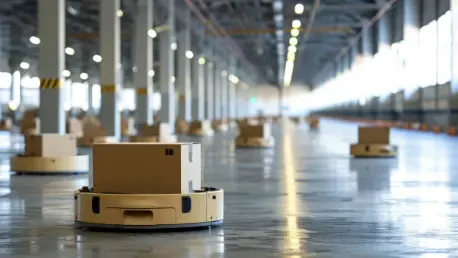In the fast-evolving world of intralogistics, few companies stand out as both innovators and practitioners like the team represented by Rohit Laila. With decades of experience in logistics, spanning supply chain management and delivery systems, Rohit has a unique perspective on the industry’s challenges and opportunities. His passion for technology and innovation drives his work, making him a visionary in integrating cutting-edge solutions into complex logistics environments. In this interview, we dive into the critical role of connectivity in modern warehouses, explore the impact of automation and robotics, and discuss how data and flexible systems are shaping the future of internal logistics.
How do you see the dual role of being a technology provider and a user of intralogistics solutions shaping your approach to the industry?
Playing both roles gives us a distinct edge. As a user, we deal with the same logistical headaches—tight deadlines, global supply chain disruptions, and the need for efficiency—that our customers face. This firsthand experience lets us empathize with their pain points. As a technology provider, we’re in a position to innovate based on those real-world challenges. We design solutions that aren’t just theoretical but are grounded in practicality, ensuring they work seamlessly in high-pressure environments. This duality helps us build trust with customers because we’re not just selling a product; we’re sharing insights from our own operations.
What do you consider the most pressing challenges in intralogistics today?
The industry is grappling with a few major hurdles. First, there’s a significant shortage of skilled workers, which slows down operations and puts pressure on existing staff. Then you’ve got global uncertainties—think geopolitical tensions or supply chain disruptions—that make planning a nightmare. Add to that the volatility of markets, where demand can spike or drop unexpectedly, and companies are forced to adapt on the fly. These challenges aren’t just operational; they affect strategy at every level, pushing us to rethink how we design and deploy logistics systems.
How is technology, particularly autonomous driving systems, transforming material flow in warehouses?
Autonomous systems like guided vehicles and shuttles are revolutionizing how goods move through warehouses. They’re not just about replacing manual labor; they optimize space, reduce errors, and boost throughput. We’ve been deeply involved in developing connectivity solutions for these systems, ensuring they’re compact and networked efficiently. For instance, in a project with a major online retailer, we tailored solutions for their warehouse robots, focusing on flexibility and rapid adaptation to design changes. The result was a system that could handle dynamic movements and hit the market quickly. It’s proof that the right connectivity can unlock the full potential of autonomy.
Can you share your thoughts on the rise of humanoid robots and their role in addressing labor shortages?
Humanoid robots are an exciting bridge technology, especially given the labor shortages we’re seeing. They’re designed to fit into existing warehouse setups—think narrow aisles and human-centric layouts—without needing major overhauls. They take on repetitive, physically taxing tasks like lifting or picking, which eases the burden on workers. We support this trend with specialized connection technologies, such as hybrid cables that combine power and data in tight spaces, and torsion cables built for constant motion. These innovations ensure the robots are reliable, helping warehouses maintain productivity even with fewer staff.
Why are scalable and flexible storage systems becoming the go-to choice for modern warehouses?
Rigid systems just don’t cut it anymore. Operators want setups they can expand or tweak without long planning cycles or downtime. Scalable, modular structures meet that need by allowing quick adjustments to demand or layout changes. We’re seeing decentralized approaches, like remote input/output systems, that communicate through advanced protocols, cutting installation costs and boosting efficiency. Techniques like daisy chaining also help by connecting components in series, saving space and materials while making systems more adaptable for the future. It’s all about staying agile in a fast-paced world.
How are standardized and quick-connect systems changing the game for warehouse operations?
Standardization and quick-connect technologies are lifesavers in logistics. With so many proprietary systems out there, having pluggable solutions that work across platforms simplifies everything from installation to maintenance. We’ve developed a range of connectors and distribution boxes that use quick-connect features, like push-pull technology, to slash setup times. This means less downtime during retrofits or repairs, which is critical in warehouses where every minute counts. These systems also make it easier for non-specialized staff to handle updates, which is huge given the skilled labor crunch.
In what ways is data becoming central to intralogistics, and how do you help harness it?
Data is everything in modern logistics—it’s how you make smart decisions. From tracking inventory to predicting demand, it’s the backbone of efficiency. We focus on creating seamless data flow from physical operations to cloud-based systems. One example is our digital inventory management tool that uses sensors to monitor cable drum levels in real time. This helps companies avoid shortages and plan replenishments accurately. When paired with AI, it can even forecast consumption patterns and adjust processes automatically. It’s about turning raw data into actionable insights that keep operations running smoothly.
What is your forecast for the future of intralogistics?
I see intralogistics heading toward even greater automation and connectivity. We’re talking systems that self-configure, networks that link up without manual input, and processes driven by real-time data and AI. The pace of change will only accelerate, with innovations like predictive logistics becoming standard. My forecast is that within the next decade, warehouses will be almost entirely proactive—anticipating issues before they arise and adapting instantly. Our role will be to keep pushing the boundaries of connectivity and data solutions to make that vision a reality for our customers.









